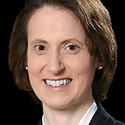12:10 PM
Executive Q&A: Raymond James' New CIO Discusses The Road Ahead
Vin Campagnoli became the new CIO at Raymond James Financial this past March, after joining the firm in 2011 as senior VP and head of the private client group technology strategy and development. He takes the reins from industry stalwart Tim Eitel, who spent 20 of his 30 years at Raymond James as CIO and will continue on with the firm in an advisory role. Campagnoli recently sat down with WS&T contributing editor Anne Rawland Gabriel for a wide-ranging discussion on his plans for his tenure at the firm.
WS&T: What is your information technology vision for Raymond James and how does it compare with the past?
Campagnoli: Although Raymond James' technology organization has always been involved with our business partners, we're strengthening that alignment. My vision is centered on building technology around the minds of our advisers so that our solutions mirror our advisers' work styles and daily business processes. I use this analogy: Our technologists need to hang over the shoulders of our users to watch what they do and then build technology to support it.
WS&T: How will you go about ensuring that your vision gets executed, particularly with respect to budget?
Campagnoli: That started early in my previous role when we named an Executive Technology Advisory Council of 16 financial advisers drawn from across all of our businesses. In addition to monthly conference calls on current projects, we hold a two-day session annually to set priorities for the coming year. We look at every potential project and narrow the list to three to five items, which I present to the executive committee from the perspective of what our advisers say they need to be more productive. Because some initiatives are background, sort of like plumbing, it can be less clear how they apply. So that's what I'm bringing to the table: a clear understanding of what IT is working on and how it ties back to our business drivers.
WS&T: Since it's clear the council will continue, how will it evolve now that you're CIO?
Campagnoli: As the council matures, we'll begin rotating off about a third of its members yearly and to bring in financial advisers who are newer to our company. That way, we ensure we're staying up to speed on what they had [at their previous positions] that they miss and how we can tweak our offerings based on their input. But, as I look around the table, there are a handful of individuals who are so valuable -- they either bring technology knowledge of their business or they bring the legacy of knowledge of Raymond James -- that they may be asked to stay on.
WS&T: Are there other ways in which you plan to involve business users going forward?
Campagnoli: Definitely. One of the things we learned from the introduction of our Goal Planning & Monitoring (GPM) tool for Advisor Access was the value of smaller working groups of advisers who want to roll up their sleeves to get involved in a particular area. So, going forward, when advisers say they want to get involved, we'll involve them. This will enable us to pursue a continuous delivery process because we'll receive immediate feedback and can make adjustments in subsequent development releases. It also keeps our end users engaged, because they see how applications develop, and it shows them we're listening.
WS&T: You mentioned the lessons from GPM. Were there other takeaways from that initiative or the Morgan Keegan integration? (Morgan Keegan was acquired by Raymond James in 2012.)
Campagnoli: Both initiatives demonstrated the importance of involving end users from the beginning. With Morgan Keegan we began talking to their financial advisers early on, doing a deep dive on their technology and figuring out what we could bring over and integrate. This brings up another main takeaway: integration. Instead of having applications in silos, it's going to become part of our DNA to ensure that everything fits and flows seamlessly.
WS&T: With respect to Advisor Access, when the GPM tool was launched last year you called it "the next piece of the plan" to differentiate Raymond James. What might the upcoming pieces look like?
Campagnoli: We'll be working on two things: customization and intelligence. For the former, it's about giving users various options for customizing the platform. This is especially important for our independent channel, where advisers are entrepreneurs running their own businesses.
For intelligence, we'll be adding more predictive analytics plus more workflows and automation. Our goal is developing a system that "thinks" like an adviser, so that actionable information begins coming to them. For example, a new piece of research would trigger a pop-up containing all affected clients across an adviser's entire book of business.
Anne Rawland Gabriel is a technology writer and marketing communications consultant based in the Minneapolis/St. Paul metro area. Among other projects, she's a regular contributor to UBM Tech's Bank Systems & Technology, Insurance & Technology and Wall Street & Technology ... View Full Bio






















